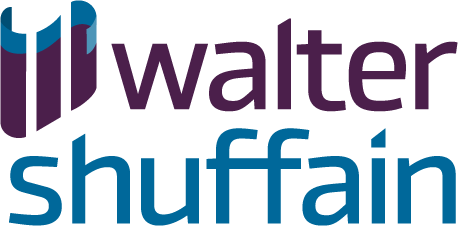Phase 3 of the COVID-19 response plan, The Coronavirus Aid, Relief and Economic Security (CARES) Act was signed into law on March 27, 2020. The bill builds upon earlier versions of the CARES Act and is intended to be a third round of federal government support in the wake of the coronavirus public health crisis and associated economic fallout. Some of the key provisions of the bill are as follows:
INDIVIDUAL TAX RELIEF
Recovery Rebates
- The rebate amounts are advance refunds of credits against 2020 taxes, and equal to $1,200 for individuals, or $2,400 for joint filers, with a $500 credit for each child. This threshold amount is based upon 2018 adjusted gross income (unless a 2019 return has already been filed), and the phaseout begins at $75,000 for single filers, $112,500 for heads of households, and $150,000 for joint filers.
Retirement Plans
- Waives the 10 percent early withdrawal penalty on retirement account distributions for taxpayers facing virus-related challenges. Withdrawn amounts are taxable over three years, but taxpayers can recontribute the withdrawn funds into their retirement accounts for three years without affecting retirement account caps. Eligible retirement accounts include individual retirement accounts (IRAs), 401Ks and other qualified trusts, certain deferred compensation plans, and qualified annuities. The bill also waives required minimum distribution rules for certain retirement plans in calendar year 2020.
BUSINESS TAX RELIEF
Employee Retention Credit
- Employers are eligible for a 50 percent refundable payroll tax credit on wages paid up to $10,000 during the crisis. It would be available to employers whose businesses were disrupted due to virus-related shutdowns and firms experiencing a decrease in gross receipts of 50 percent or more when compared to the same quarter last year. The credit is available for employees retained but not currently working due to the crisis for firms with more than 100 employees, and for all employee wages for firms with 100 or fewer employees. The credit applies to wages paid after March 12, 2020, and before January 1, 2021.
Payroll Tax Deferral
- Payroll taxes due from the period beginning on the date the CARES Act is signed into law and ending on December 31, 2020, are deferred. The entirety of payroll taxes incurred by employers, and 50 percent of payroll taxes incurred by self-employed persons qualify for the deferral. Half of the deferred payroll taxes are due on December 31, 2021, with the remainder due on December 31, 2022.
Net Operating Losses
- The bill allows for a five-year carryback of net operating losses (NOLs) arising in 2018, 2019, or 2020 by a business. Businesses will be able to amend or modify tax returns for tax years dating back to 2013 in order to take advantage of the carryback. Under current law, only farming NOLs are allowed to be carried back, and the carryback is limited to two years. In addition, losses carried to 2019 and 2020 will be permitted to offset 100% of taxable income, as opposed to 80% under the current law.
Temporary (and Retroactive) Removal of Section 461(l)
- Section 461(l) provides that the amount of “net business loss” an individual may use in a year to offset other sources of income is capped at $250,000 (if single; $500,000 if married filing jointly). The latest legislation, however, puts a temporary halt on Section 461(l); not only for 2020, but retroactive to January 1, 2018. As a result, taxpayer who found a loss limited by the provision in 2018 or 2019 can file an amended return to claim a refund.
Business Interest Expense Limitation
- The TCJA limited the amount of allowable deductions for business interest (regardless of the type of entity) for tax years beginning after 2017. The limitation is generally the amount of business interest income for the year plus 30 percent of the taxpayer’s adjusted taxable income for the year. The bill increases the limitation amount to 50 percent of the taxpayer’s adjusted taxable income for 2019 and 2020. In calculating the limitation for 2020, the taxpayer may elect to use adjusted taxable income for 2019.
Qualified Improvement Property
- The CARES Act corrects this Congressional oversight by defining qualified improvement property as 15-year property, thus allowing 100 percent of improvements to be deducted in the year incurred. The change is made as if included in the TCJA and, thus, is effective for property acquired and placed in service after September 27, 2017. This technical correction allows any expenses incurred by owners to make improvements to the physical premises related to these businesses to be accelerated into the 2017 or 2018 tax year on an amended return or the 2019 tax year on a return due July 15, 2020.
In addition, the US Senate Committee on Small Business and Entrepeneurship put out The Small Business Owner’s Guide to the CARES Act.
Contact us directly should you have any further questions. At this time, the majority of our staff are currently working from home, which means the best means for contact is via email. We continue to work hard to ensure your personal and business needs are met during these tumultuous times. Stay safe and healthy!
Yours truly,
Walter & Shuffain, P.C.
